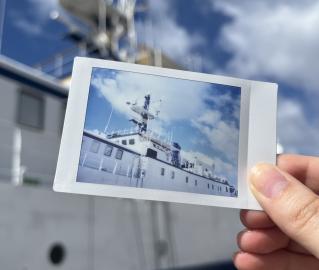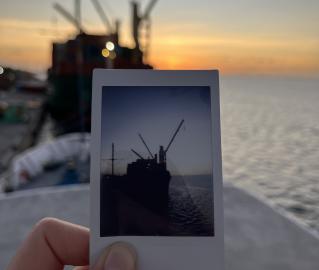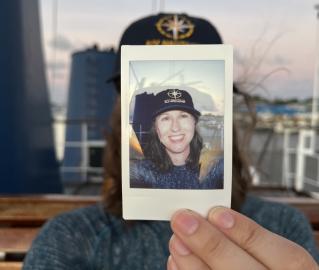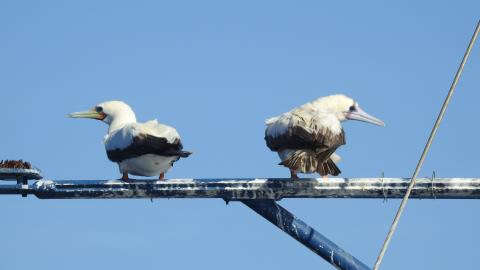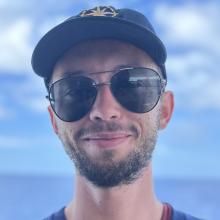
Adrian Burke
Tell us about your work/research. What kinds of things do you do?
For the past three years, I have worked on various projects on Kauaʻi working towards conservation of endangered and native birds. Most recently, I worked with Kauaʻi Forest Bird Recovery Project with a focus on establishing captive conservation populations of ʻAkekeʻe and ʻAnianiau as those species' populations decline towards extinction in the wild, mostly as a result of the non-native mosquito-borne disease avian malaria. For me, this meant working and camping in the remote rainforests of the mountains of Kauaʻi, looking and listening for the birds, and queuing in on breeding behaviors in order to locate their nests so that their eggs could be collected and hatched in the safety of captivity. Prior to that, I worked with Archipelago Research and Conservation monitoring and mapping breeding colonies of endangered seabirds in the mountains of Kauaʻi and helping establish new colonies protected by predator-proof fences. I also worked with ARC to monitor how birds interact with power lines on the island, helping assess how mitigation efforts such as reorganizing wire arrangements and installing reflective diverters are helping to prevent collisions.
What sparked your initial interest in your career?
Some of my earliest memories are of being glued to the window at my grandmother's house, looking out at the birds on her backyard bird feeder. Before long, I found myself regularly walking around New York City's Central Park with a camera, documenting the wildlife I saw around me. I was amazed by the remarkable diversity of wildlife I found, even in a city park surrounded by concrete. Over 270 species of birds have been documented in NYC's Central Park! Finding and enjoying all the amazing creatures we share our Earth with quickly became my obsession. As I learned more and more, it struck me that so many amazing species are at risk of being lost forever -- and many already have been -- as a result of human activities, from habitat destruction and climate change to overharvesting and the spread of invasive species. I felt I had to do everything I could to help stop the declines and instead help species recover, so I decided to work in conservation biology.
Who influenced you or encouraged you the most?
I definitely take after my grandfather, who almost caused highway pileups because he would slam on the brakes and wander off at the sight of a rare butterfly.
What element of your work/study do you think is the most fascinating?
Being able to work in some of the most beautiful and remote places on the planet is truly a dream come true!
How did you get involved with the Ocean Exploration Trust?
OET was looking for a seabird biologist to collect data on seabird observations aboard the Nautilus to better understand which seabird species are found in these undersurveyed parts of the ocean. They reached out to several people, including my former boss Andre Raine, who were all busy saving endangered seabirds in one place or another. Andre put them in touch with me, since I had just finished a season of work and was planning on doing some traveling, and I jumped at the opportunity!
What other jobs led you to your current career?
I spent a summer working as a volunteer with the US Fish and Wildlife Service in the Arctic National Wildlife Refuge of Alaska collecting data for a long-term tundra nesting birds study. After that, I spent some time in Fairbanks, Alaska, volunteering with Alaska Department of Fish and Game capturing, banding, and releasing ducks to support research and management. I also worked as a lift operator at a ski resort in Colorado, which gave me some more experience working in challenging outdoor settings!
What are your degrees and certifications?
Bachelor of Science in Biology -- SUNY Binghamton University 2020
What are your hobbies?
I love shredding down mountains on a pair of skis, playing classical piano, and scuba diving.
What advice would you give someone who wants to have a career like yours?
Share with people how beautiful and amazing our natural world is! Show someone a bird or a plant or a bug or a mushroom; try to get people excited. If people connect with nature, they're more likely to want to protect it!
Expeditions
Adrian participated in the following Ocean Exploration Trust expeditions:
